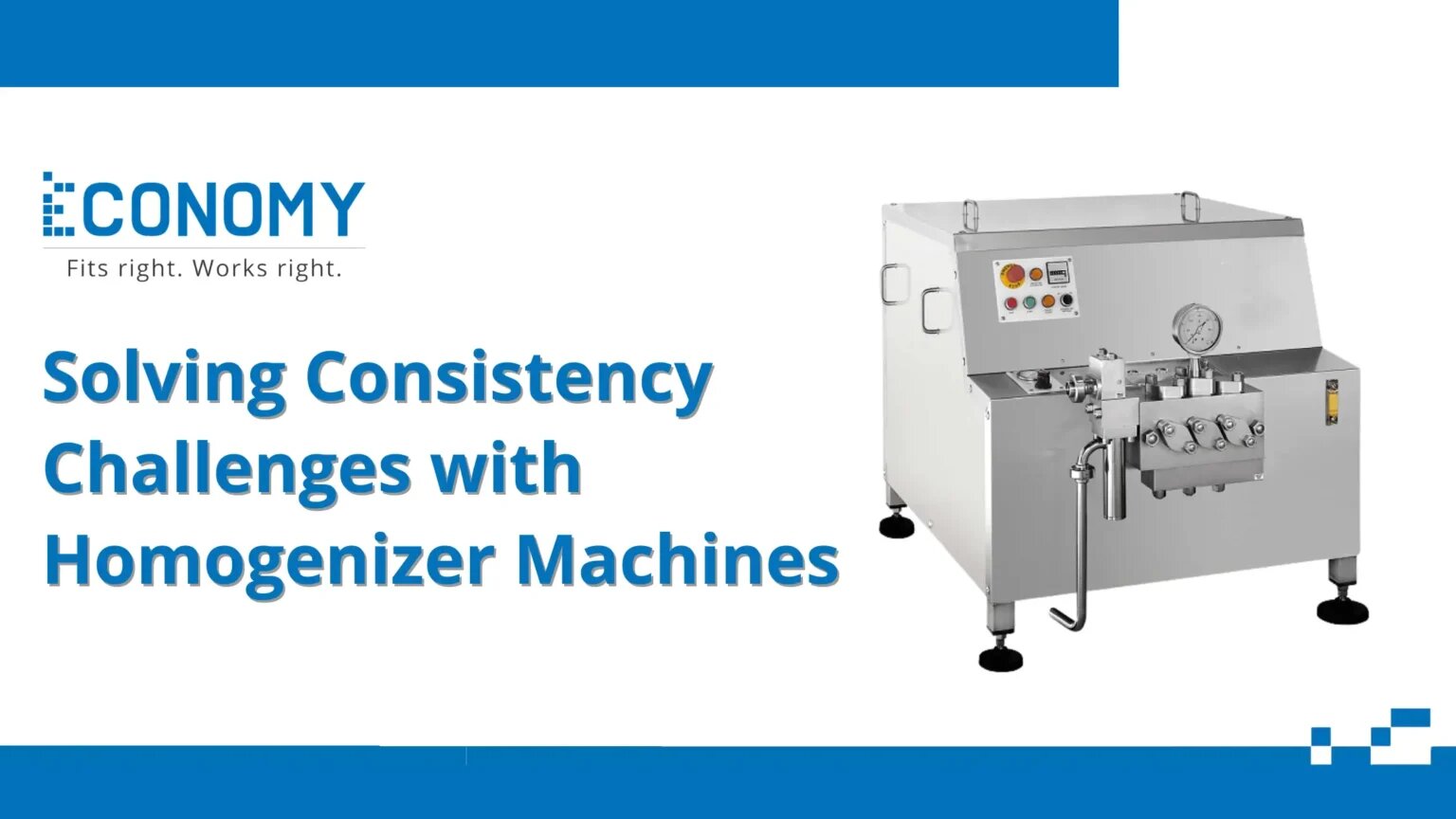In various industries such as food and beverage, pharmaceuticals, cosmetics, and chemical manufacturing, maintaining product consistency is paramount. The quality, safety, and efficacy of these products often hinge on uniformity at the molecular or microscopic level. Homogenizer machines, designed to blend materials into a homogeneous mixture, are essential tools for solving consistency challenges. This article delves into how homogenizer machines address these challenges, exploring their mechanisms, benefits, and applications across different sectors.
Understanding Homogenization
Homogenization is a process that reduces the particle size of a substance, ensuring a uniform distribution of its components. This is achieved through mechanical means, where a homogenizer machines exerts high pressure and shear forces on the material, breaking it down into smaller, consistent particles. This process is crucial in creating stable emulsions, suspensions, and dispersions, where even minor inconsistencies can significantly affect the final product’s quality.
Mechanisms of Homogenizer Machines
Homogenizer machines operate on several principles, the most common being high-pressure homogenization. In this method, the material is forced through a narrow valve or nozzle at extremely high pressure. The sudden drop in pressure, combined with shear and impact forces, breaks down the particles into a fine, uniform size. This results in a homogeneous mixture with improved stability and consistency.
Another method is ultrasonic homogenization, where ultrasonic waves create cavitation bubbles in the liquid. These bubbles collapse, generating intense shock waves that break down the particles. This method is particularly effective for emulsions and dispersions requiring fine particle sizes.
Benefits of Homogenizer Machines
Improved Product Quality
One of the primary benefits of choosing homogenizer machines is the enhancement of product quality. By ensuring a uniform particle size distribution, homogenizers improve the texture, appearance, and stability of products. For example, in the dairy industry, homogenization prevents cream from separating in milk, resulting in a smoother, more palatable product. In pharmaceuticals, consistent particle size ensures uniformity in dosage, enhancing the efficacy and safety of medications.
Enhanced Stability
Homogenization significantly improves the stability of emulsions and suspensions. By reducing particle size and ensuring uniform distribution, homogenizers prevent the separation of components over time. This is crucial in industries like cosmetics, where product stability affects shelf life and consumer satisfaction. For instance, homogenized lotions and creams remain smooth and stable, without the risk of separation or clumping.
Increased Efficiency
Homogenizer machines also increase the efficiency of production processes. By achieving the desired consistency in a single pass, they reduce the need for multiple processing steps, saving time and energy. This efficiency translates into cost savings, making homogenizers a valuable investment for manufacturers. Additionally, the ability to produce consistent batches minimizes waste and reduces the likelihood of product recalls, further enhancing operational efficiency.
Applications of Homogenizer Machines
Food and Beverage Industry
In the food and beverage industry, homogenizer machines are widely used to improve the quality and consistency of various products. For example, in dairy processing, homogenization ensures that milk, cream, and yogurt have a smooth texture and uniform taste. In the production of beverages like juices and sauces, homogenizers help to create stable emulsions and suspensions, preventing separation and enhancing mouthfeel.
Pharmaceutical Industry
Homogenizers play a critical role in the pharmaceutical industry, where consistency and uniformity are vital. They are used in the production of various dosage forms, including suspensions, emulsions, and creams. Homogenization ensures that active pharmaceutical ingredients (APIs) are evenly distributed, resulting in accurate dosing and improved therapeutic efficacy. Moreover, it enhances the bioavailability of poorly soluble drugs by reducing particle size, facilitating better absorption in the body.
Cosmetics Industry
In the cosmetics industry, homogenizer machines are essential for producing high-quality, stable products. They are used to create smooth, consistent creams, lotions, and serums by breaking down particles and ensuring uniform distribution of ingredients. This not only improves the texture and appearance of the products but also enhances their performance and shelf life. Homogenization helps in achieving the desired consistency in makeup products like foundations and concealers, ensuring a flawless application.
Chemical Industry
Homogenizers are also used in the chemical industry for creating stable dispersions and emulsions. They help in producing consistent batches of products like paints, coatings, and adhesives, where uniform particle size is crucial for performance. Homogenization ensures that these products have the right viscosity and stability, preventing issues like settling or separation.
Conclusion
Homogenizer machines are indispensable tools for solving consistency challenges across various industries. By reducing particle size and ensuring uniform distribution, they enhance product quality, stability, and efficiency. From food and beverages to pharmaceuticals, cosmetics, and chemicals, homogenizers play a vital role in maintaining the integrity and performance of products. Investing in advanced homogenizer technology can help manufacturers meet the stringent demands of their respective industries, ensuring that their products consistently meet high standards of quality and efficacy.




